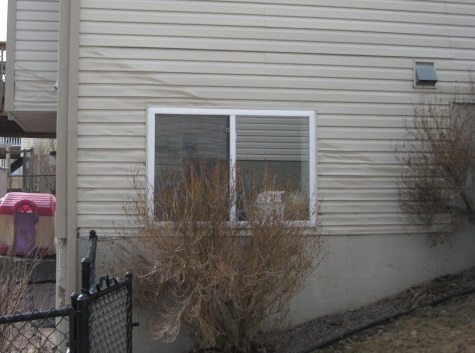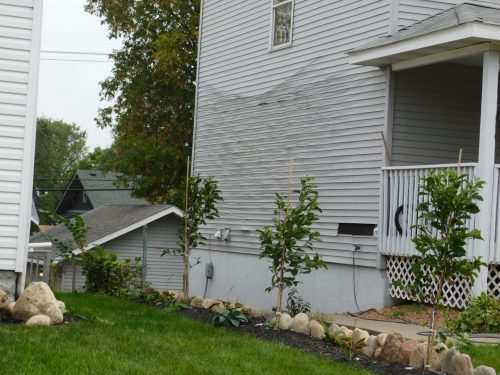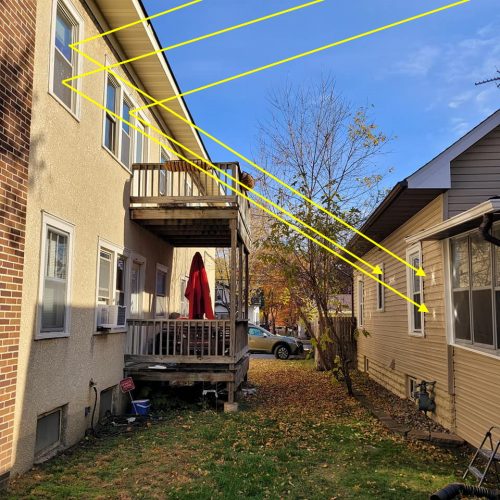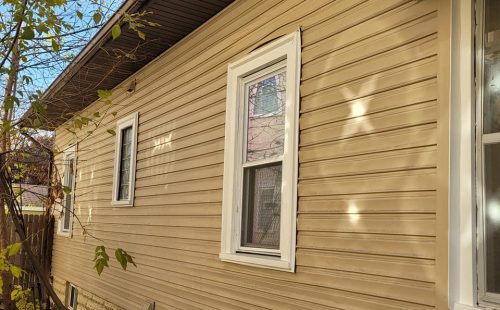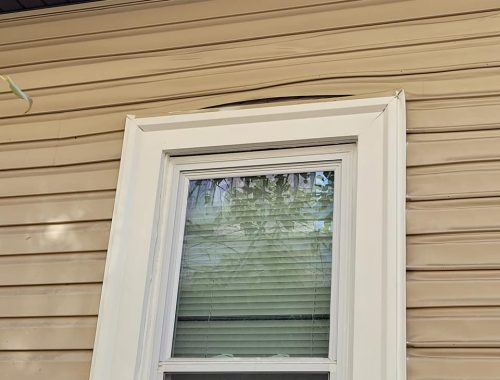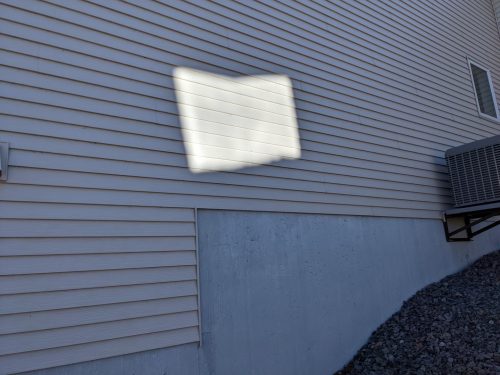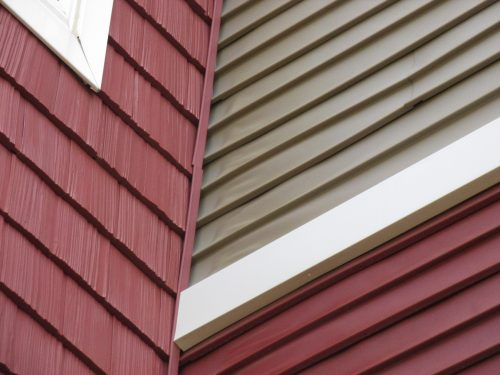Vinyl siding can melt when exposed to high temperatures, and we regularly run into this as home inspectors. There are two common causes for this: grills and reflected sunlight.
Grills
When we find vinyl siding melted about chest-high near a patio or deck in one concentrated area, it’s surely the result of a grill placed too close to the house. Grills kick out a lot of heat, so keep ’em away from your house. I’ve never done any testing to figure out exactly what’s a safe distance, but six to ten feet seems like a pretty good number to me.
Reflected sunlight
This is the mysterious one. Light reflected off of windows can actually generate enough heat to melt vinyl siding, and we find this phenomenon a few times every year. Here’s an example of damage caused by reflected sunlight.
Here’s another one, this was pretty nasty.
And here’s another situation that we’ll take a closer look at. This first photo shows the macro view; sunlight is hitting the house on the left, and the windows are reflecting this light onto the house on the right.
Here’s another photo showing the reflected sunlight.
And here’s a closeup, showing the melted siding.
One thing you’ll notice is that the reflected sunlight in the photos above consists of four-pointed stars. Odd, right? When a healthy window creates a reflection, it’ll be rectangular, like the example below.
But when a window is afflicted with a condition known as collapsed glass, it’ll create a concentrated four-pointed star, like the examples above. I’ll describe collapsed glass in next week’s blog post. Additionally, the windows creating these damaging reflections probably have a low-emissivity coating, aka low-e coating. This coating is added to windows to help prevent heat from being transferred through the windows into the home, but it also means that this heat gets reflected right back out.
When the sun is high in the sky, no big deal. But when the sun is low in the sky throughout the day (think winter), the reflected light has the potential to hit neighboring houses, or maybe other parts of the same house. And this is what leads to melted vinyl siding. Here’s another example, but this house surely had self-inflicted damage, meaning this reflection came from the same house.
The Vinyl Siding Institute has put together an excellent video explaining how this all works, as well as why it’s not the vinyl siding’s fault.
I have to agree with the vinyl siding manufacturers; this is an unnatural occurrence, and this will happen to vinyl siding any time it’s subjected to this kind of heat. According to construction law attorney Kurt M. Mitchell, there is no legal precedence for assigning blame when it comes to melted vinyl siding, most likely because this creates no safety hazard, no performance issues (usually), and the cost of the damaged material is typically quite minimal. It’s primarily a cosmetic issue.
If you have melted siding as a result of your neighbors’ windows, my advice is to be nice to your neighbors, butter them up with some delicious food and/or drinks, and offer to buy them window screens to install over the offending windows. Here’s an example of a company that sells outdoor screens that claim to prevent this: EZ Snap. That, or you could go the opposite route and take Marko Vovk’s advice, which consists of throwing ice balls through your neighbors’ windows. I don’t recommend that route ;-).
For more information on melted vinyl siding from the National Association of Home Builders, click here: Sunlight Reflected from Double-Paned Low-E Windows, and Damage to Vinyl Siding and Other Materials.
Summary
Reflected sunlight can deform vinyl siding, but it’s usually a cosmetic issue only. The contributing factors to this are nearby windows with a low-e coating, collapsed glass at these windows, and the sun being low in the sky.

